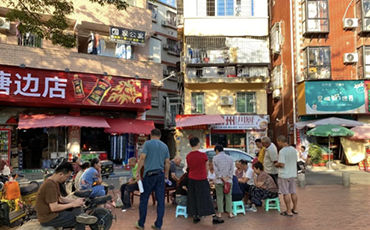


Introduction:
On November 15, 2024, the Ministry of Housing and Urban-Rural Development (MOHURD) and the Ministry of Finance jointly issued a notice expanding the policy support for urban village renovation from the initial 35 megacities and large cities to nearly 300 prefecture-level and higher-tier cities. This policy adjustment signals that urban village redevelopment is set to become a nationwide trend.
Xiamen has been a pioneer in urban village regeneration. From November 1 to 7, 2024, the Xiamen Urban Design Week focused on the city's practical experience in "modernizing urban village governance," gradually establishing a systematic and sustainable mechanism for urban village renovation and management. Among these efforts, the adoption of the EPC+O model demonstrates foresight and innovation. Although still in its early exploratory phase, the growing emphasis on "operations" as a priority in urban renewal has prompted critical reflections: What is the core essence of the EPC+O model? What tangible benefits can it deliver? And what potential challenges need to be addressed?
Ⅰ.Returning to Economic Fundamentals: The Call for Renewed Governance Mechanisms
Urban village regeneration must adhere to economic principles-a critical aspect often overlooked in traditional shantytown redevelopment projects. A common misconception is focusing solely on physical space upgrades while neglecting capital operation and profit model design. Under this flawed approach, regeneration is perceived primarily as government-led public welfare investment, sometimes even romanticized as a "passion project." While such thinking may fulfill certain idealistic aspirations, it proves unsustainable in the long run.
At its core, urban village regeneration represents a complex game of resource reallocation, where capital serves as the fundamental resource and core driver. However, this does not imply that capital is merely a "one-time consumable." A viable regeneration model requires both upfront investors and backend operators, necessitating a sustainable mechanism that transforms initial investments into returns. Only by attracting new social capital and enabling fund recycling can the regeneration achieve lasting success.
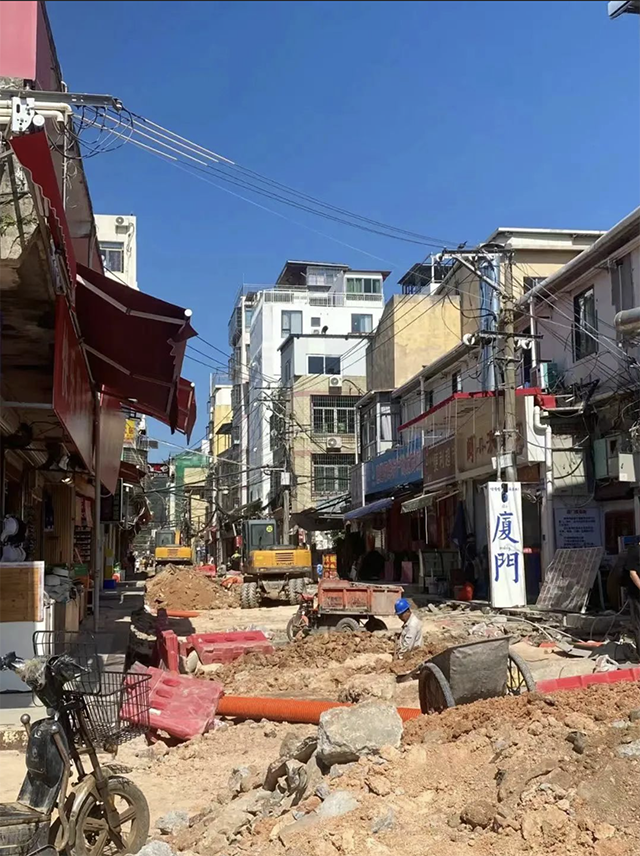
Figure 1: Redevelopment in high-density urban villages with complex property rights-whether involving infrastructure upgrades or demolition of unauthorized structures-requires substantial financial backing. However, with growing fiscal pressures, the sustainability of solely government-funded investment faces significant challenges. (Photo/Xu Nuo)
Secondly, the long-term and complex nature of urban village renovation requires the coordinated operation of the entire system, but the current model of separate professional links is contrary to this. Usually, different implementation entities are recruited for the planning, design, construction, investment, and operation within the renovation cycle of urban villages, leading each entity to approach the renovation with a "project-based" logic and profit as the main driver. As a result, the project becomes a short-term behavior of "quick in and quick out": providing services for the responsible link, collecting service fees, and then quickly withdrawing. This one-off approach not only easily leads to errors in the connection of links but also makes each service provider stop at a superficial level, making it difficult to guarantee the final effect.
Furthermore, many urban village renovations do not truly understand that renovation and renewal do not have a "completed tense", but rather are a repetitive and continuous process. This mindset leads them to prefer standardized and replicable content and models in the renovation, relying on homogeneous operation paths and attempting to "complete" the project in the fastest and lowest-risk way.
The consequence of this is that in the renovation of some urban villages or historical towns, renewal has gradually been simplified into a standardized process of "historical elements + trendy business forms + surface beautification + media promotion". Especially after the intervention of social media, due to the speed at which the Internet produces content far exceeding the process of people's demand generation and discovery, a series of low-end, homogeneous, and overly dependent on Internet promotion trendy business forms have been inserted, resulting in the replacement of spatial functions by a single "check-in" experience. The needs of residents and diverse functions have been marginalized, and urban spaces have increasingly become appendages of Internet content, serving as backdrops for single visual consumption rather than multi-functional living spaces. The result is that beneath the surface of prosperity, spatial vitality and social value have not been truly reconstructed or enhanced.
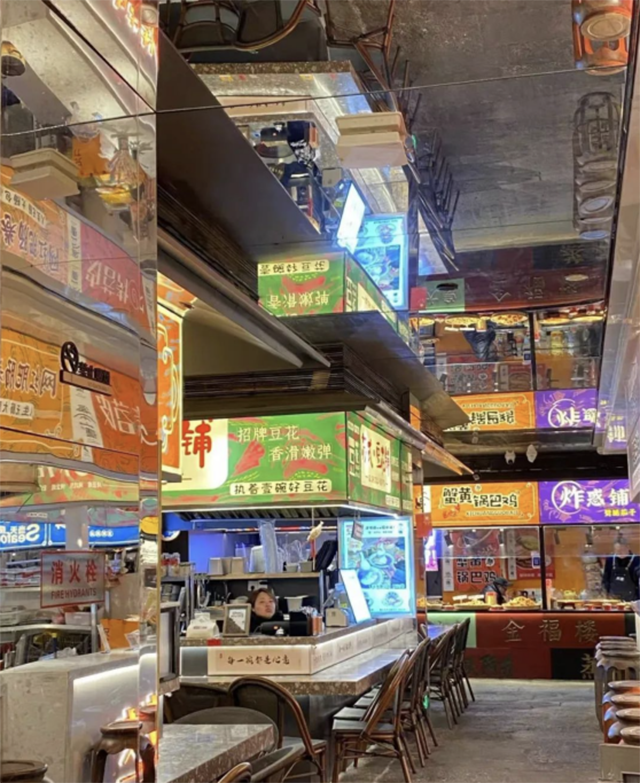
Figure 2: With the help of the dissemination power of the Internet, many spaces with historical elements have chosen the path of "internet celebrity-style renewal", blindly believing that "the success of urban renewal is determined by how good the photos look". They quickly attract traffic and create topics with the simplest design plans and the most effective renewal methods in the short term. However, this model is often just a flash in the pan. The picture shows the vertical commercial street of Shantang Street in Suzhou, Hai Shi Shantang. It attracted many tourists to experience and take photos of the modern Shantang street life that could "make good pictures" in the early days of its opening, but later there were few visitors. (Photography/ Xu Nuo)
Ⅱ. The Perspective of Modern Governance in Urban Villages Emphasizing "Operation"
Since the beginning of this century, Xiamen has been a pioneer in exploring the renovation of old villages, implementing the "village-to-community" policy and launching the first batch of old village renovation projects (such as Huangcun and Zengcun'an), initiating the active transformation and governance of urban villages. In 2009, it launched a three-year comprehensive improvement action for urban villages. In 2019, it released the "Xiamen Village Spatial Layout Plan (2017-2035)", classifying and planning the control of urban villages. In 2023, Xiamen formulated a three-year action plan for the governance of urban villages, establishing a phased governance approach of "one year for pilot, two years for breakthrough, and three years for full coverage", and implementing comprehensive modern governance for all 108 urban villages (369 natural villages) in the city. The transformation and governance of urban villages in Xiamen have continuously upgraded from the 1.0 model to the 3.0 model.
Among them, some urban villages innovatively adopted the EPC+O (Engineering + Procurement + Construction + Operation) integrated model in the 3.0 model. EPC+O is a comprehensive model integrating design, procurement, construction, and operation management. It extends the traditional EPC project general contracting model and includes investment promotion and operation management services. Through this integrated model, the general contractor is responsible for the entire life cycle management tasks of the project, from the early planning to the later operation. Compared with the previous model where each professional link is separated, it can more effectively integrate resources and ensure the systematicness and sustainability of the project.
Some urban villages in Xiamen have chosen to adopt the EPC+O model for their renewal and governance, precisely because they have recognized the key issues in the renovation of urban villages: the traditional renovation mechanism often lacks a clear responsible entity, and the various links are scattered and fragmented, with an unclear overall renovation goal and positioning. In Xiamen, Weili Village was the first to adopt the EPC+O model, inviting China Construction Fourth Engineering Bureau to form a consortium to plan and manage the municipal public facilities, rental housing, and later operation projects in a coordinated manner. Tangbian Village also adopted the EPC+O model, led by Fuxinli Urban Space Operation Co., Ltd. (hereinafter referred to as Fuxinli), to conduct overall planning, investment promotion, and operation management for the urban village space, collective assets, and cultural, sports, tourism, and commercial formats, as well as later management work.
Ⅲ. What unique advantages can the EPC+O model demonstrate in the renovation of urban villages?
First of all, it endows the responsible entity with the role of a "big butler" with systematic management thinking. In the view of Wang Wei, the chairman of Fuxinli, "overall planning" is the most prominent difference compared with the previous model. As the implementing entity of the EPC+O model modern governance in Tangbian Community, Fuxinli is not only responsible for the overall planning of each link and the area, but also needs to consider the overall planning of different business types, as well as the overall planning and balance between the community's public welfare nature and commercial operation nature.
Through the overall planning of a single entity, all the links in the urban village renovation can be closely integrated and coordinated, and some links can be reasonably crossed or connected in advance. This approach can effectively alleviate the drawbacks of the fragmentation and dispersion of each link in the traditional model: overly long cycles, poor connection, rising costs, and poor results and quality, etc. Unlike the traditional approach where each link of a project is handled by different institutions, establishing a coordinating entity can run through the entire process from the initial overall planning, space design, construction to the later operation. Under such a model, the connection between links is smooth, the concept is consistent, and the input cost is not likely to be wasted in the connection and handover links.
In addition to the overall planning of vertical links, the establishment of systematic management also means having a more unified and complete top-level planning guidance to drive the advancement of each parallel sector. Fuxinli takes operation as the entry point and divides the planning and design of Tangbian Community into six major sections for promotion: community commerce, public service facilities, cultural, sports and tourism product brands, large property management (property management), smart community, and community building. When Wang Wei talked to "City China" about the sustainability of the operation and governance of urban villages, he particularly mentioned the need to coordinate and balance the public welfare of the community and commercial operation. "Some business types have relatively high income, but small businesses that are convenient for the people, such as making keys or repairing shoes, are difficult to survive in the rent competition in the market." In such a situation, the responsible entity needs to make overall plans and subsidize non-profit but community-essential business models through profitable ones. If the accounts are calculated and the income and expenditure are balanced after overall planning, then the business model system will be relatively complete. From this perspective, when local interests conflict with overall interests (the long-term goals or overall planning of a project), the existence of the "big manager" makes it easier to make a comprehensive judgment and balance.
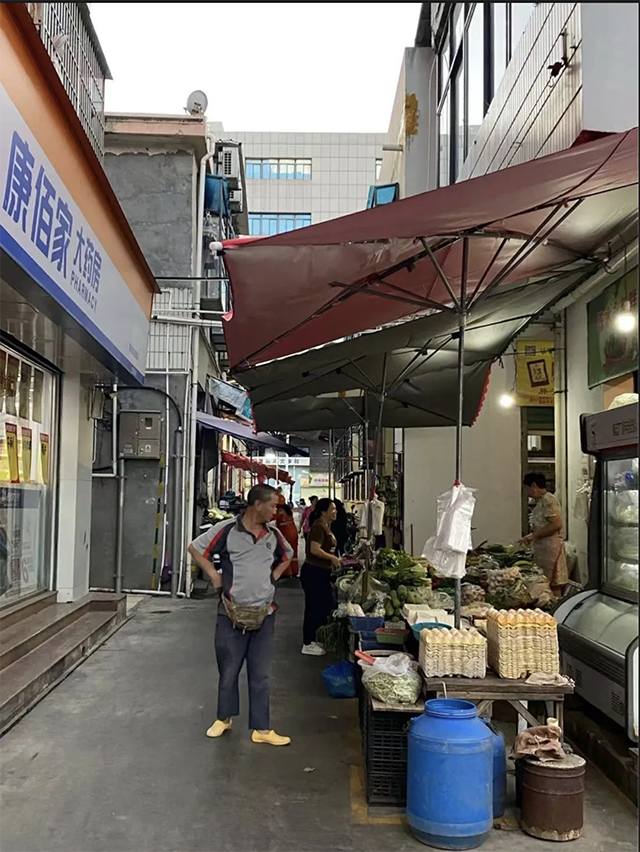
Figure 3: In the street space of urban villages, some stalls often naturally "grow" according to the real needs of residents, such as vegetable stalls, snack stalls, or shoe repair stalls. (Photography/Xu Nuo)
Secondly, it forces urban villages to undergo self-sustaining transformation. Under the EPC+O model of Tangbian Community, the responsible entities are not only the design party, but also the construction party and the future operator. This binding mechanism of revenue and responsibility can be said to be a push for an upgrade in the quality of urban village renovation and governance. When it comes to calculating the overall account from the perspective of the entire life cycle, this is not a short-sighted game of interests, but a well-considered long-term investment. In this way, the issue of how to self-generate "blood" in the later stage of operation becomes a prerequisite and an essential option.
Tangbian Community is located in a relatively central position on Xiamen Island and mainly consists of young migrant workers, with an immigrant population as high as 82%. Therefore, in the overall planning, it was first considered as a "residential community". Based on the government's basic situation review of Tangbian Community, Fuxinli, in combination with the planning guidelines for the 15-minute community life circle, conducted a comprehensive investigation and analysis of the regional environment, spatial resources, industrial structure, public services, and population structure. Moreover, it carried out rectification and improvement of the spatial environment by analyzing the differences among different resident groups and age groups. Identify and address any deficiencies in community supporting services and commercial services. On "Minsheng Street", we can see various convenient service places that meet the daily needs of the people, such as mending shops, convenience stores, barber shops, pharmacies, and day care services for the elderly. Without residential communities, the operation and governance of urban villages would be rootless.
The transformation of physical space is only a phased task. To ensure the sustainable development of urban villages and bring tangible benefits to local residents, it is inevitable to enhance the community's self-sustaining capacity. In the modern governance of urban villages in Xiamen, the goal of "four major communities" has been proposed. Among them, the "business-friendly community" emphasizes the discovery, cultivation and development of the village's own industries and "self-sustaining capacity" through precise planning and tailor-made solutions, so that it no longer mainly relies on external funds. Tangbian Community has preserved historical and folk cultural buildings that have been around for over a hundred years. To the north, it is adjacent to the natural landscape of Shitou PI Mountain. Creating a unique historical, cultural and natural landscape line in the middle of Xiamen Island can be said to be a natural move. It also echoes one of the "three enhancements" vision of Xiamen's urban village renovation and governance, which is to enhance the brand of the integration of culture, sports, tourism and business.
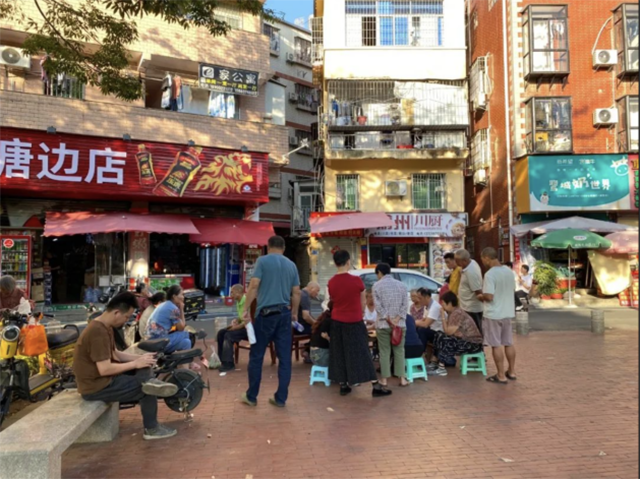
Figure 4: The main street of Tangbian Community is rich in business types, gathering various shops and facilities such as restaurants and snacks, vegetables and fruits, convenience stores, and childcare centers. On the other side, the public square space provides residents with a place for neighborhood interaction and playing chess and cards. (Photography/Xu Nuo)
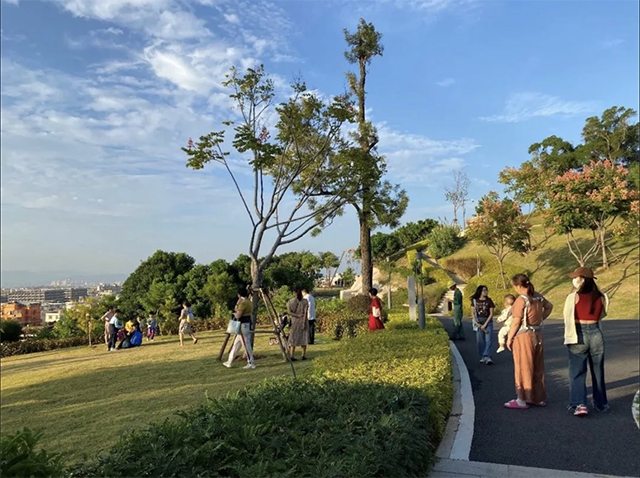
Figure 5: Shitoupi Mountain is a wild and charming "doorstep" park, adjacent to densely populated urban villages such as Tangbian, Houpu and Malong. From climbing up the mountain, one can overlook the scenery of Xiamen Island in the distance and also see cultural imprints such as ancestral halls and temples. Even on weekdays in the afternoon, we saw many local residents with their children or with their families and friends resting and having fun here. (Photography/Xu Nuo)
Fuxinli also has a path it is exploring on how to implement the industrial vision of urban villages. They also considered taking a real estate mindset and using market-oriented means to reclaim and integrate some Spaces for unified planning and cultivation. However, this approach was eventually abandoned because it was perceived that urban villages had their own unique operational logic and mechanism. As Wang Wei believes, the "vitality" of urban villages cannot be easily replicated but has "gradually emerged". Its uniqueness lies in the fact that the main body of its population is diverse and the space is rich. Their organic interaction can generate various possibilities.
Therefore, in the industrial planning of Tangbian Community, Fuxinli focuses on exploring the potential value of special historical buildings such as the Red Building, the White Building, and the She Family Small Clan in small streets and alleys. It also builds key nodes with different functions such as the Half-Mountain PARK and the Sports PARK, using "point-like Spaces" to radiate the surrounding areas. Through investment promotion and community building, it is driven by the managers and the community. Form a natural and organic state of industrial generation and development. In fact, when it is difficult to rely solely on the investment of local governments and large enterprise groups, the "O" in "EPC+O" itself encompasses how to attract the entry of social capital such as communities and third-party organizations. However, Fuxinli still serves as the "big manager" and is exploring a mechanism for co-construction, co-creation, co-integration and co-discussion among multiple subjects suitable for urban villages.
Conclusion:
As an innovative model for the renovation of urban villages, the long-term feasibility of EPC+O still needs time to be verified. In this process, many potential problems and challenges need to be avoided. For instance, it is necessary to prevent a cooperation system that is formally integrated but essentially still separated and fragmented.
A more important yet often overlooked point is that the EPC+O model makes management unified, but it also highly concentrates operational risks. It is necessary to pay attention to the health of the capital chain of the general contracting operation entity and prevent situations such as project abandonment and uncontrolled development. At the same time, the selection of industries and operation models should not be driven by short-term economic benefits. Wang Wei also shared with Urban China that in the "EPC+O" model, "EPC" is relatively temporary, but for the space within the urban village and the entire community's "O", that is, operation, it is long-term. Compared with the concentrated investment in the first stage, with the subsequent participation of social capital and the increase in its operational investment, it is necessary to achieve a balance between income and expenditure and ensure positive returns by gradually increasing operational income. This is undoubtedly a challenge, so innovation is necessary, whether in terms of the overall planning mechanism, management methods, or the introduction and cultivation of business forms.
Source: Urban China Magazine. Written by Xu Nuo, edited by Xu Nuo + Cui Guo. "Memphis and the City" series design by Lin Ji Studio
Editor & Translator:Jin He